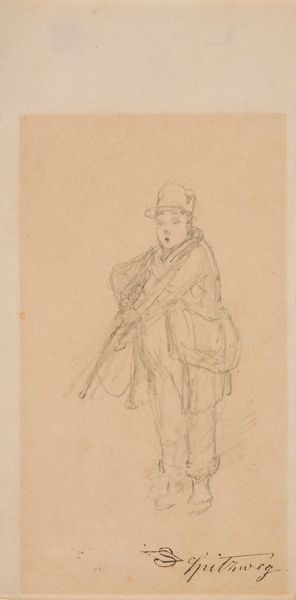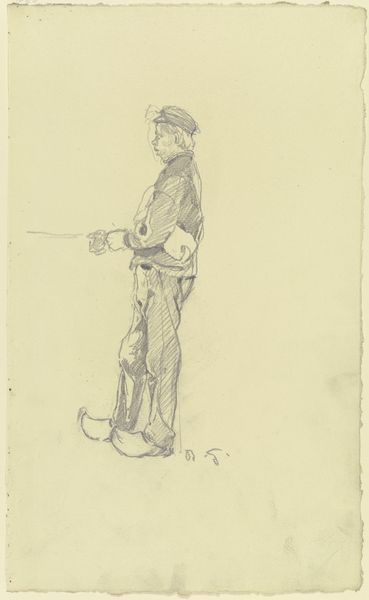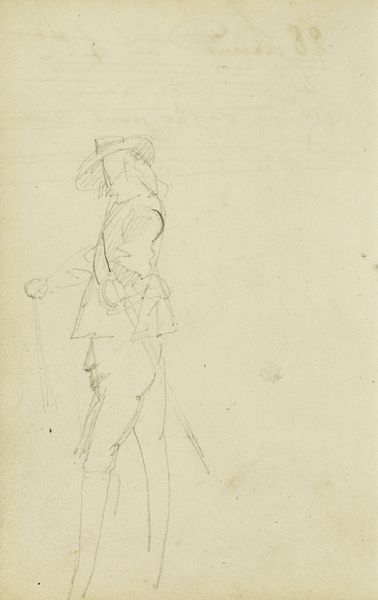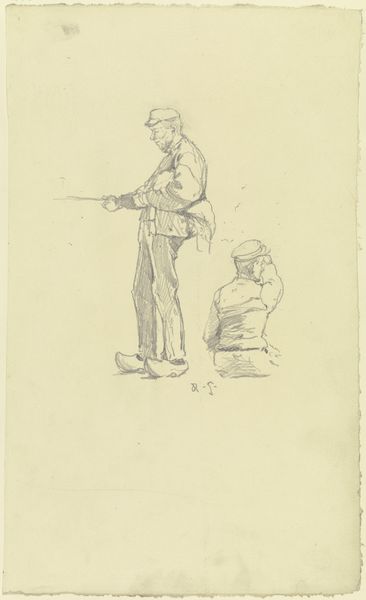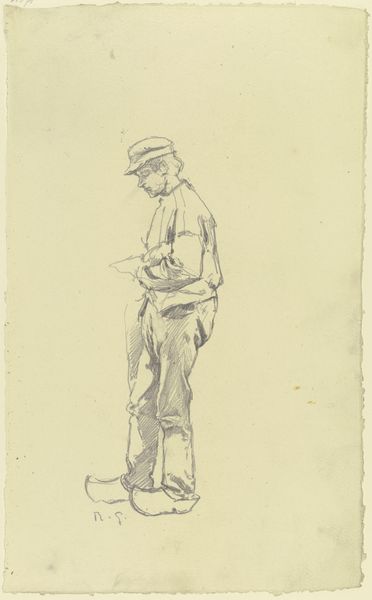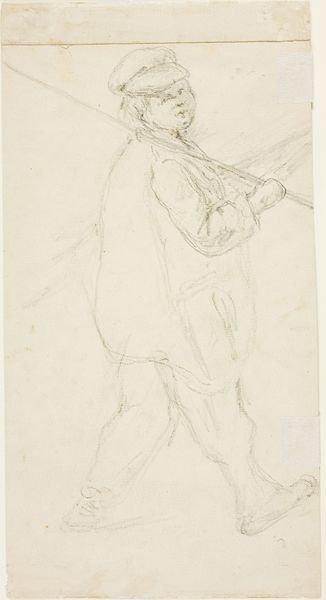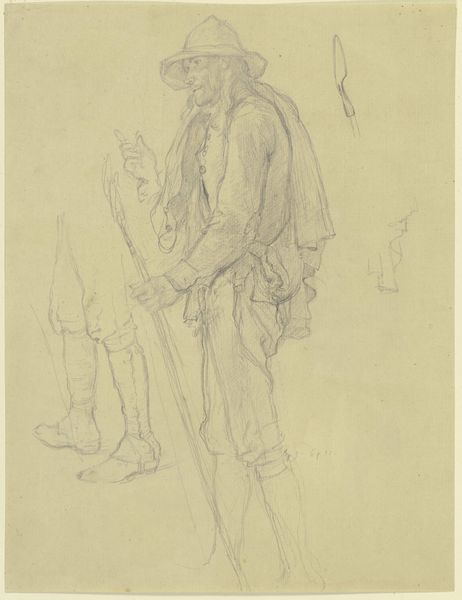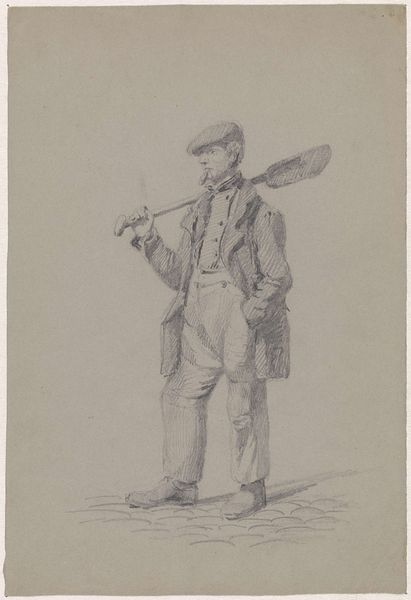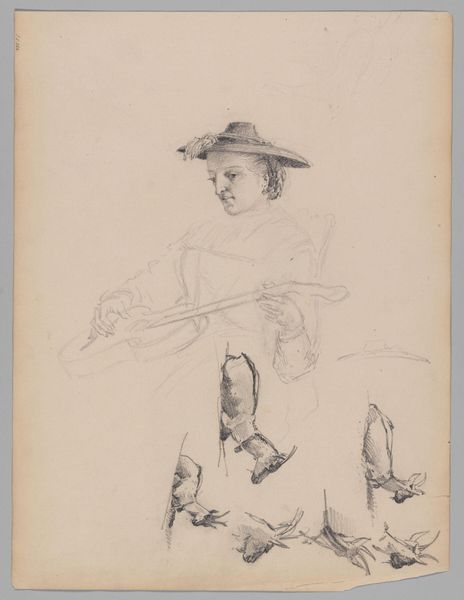
drawing, pencil
#
portrait
#
drawing
#
pencil sketch
#
figuration
#
pencil
#
history-painting
#
academic-art
#
realism
Dimensions: sheet: 31 × 21.5 cm (12 3/16 × 8 7/16 in.)
Copyright: National Gallery of Art: CC0 1.0
Curator: This is Daniel Huntington's pencil sketch, "Recruit; Two Studies of Heads," dating from around 1862. Editor: My first impression is of restraint and tentative action, conveyed in a pale register with soft focus on a single figure presented as a study. Curator: Exactly. The subject, a Civil War recruit, appears three times. The central, full-length figure, rifle in hand, dominates the composition, flanked by smaller head studies on either side. He’s very much presented in profile and perhaps on the cusp of significant decisions and life changes. Editor: From a purely formal point of view, notice the delicate cross-hatching. It’s incredibly controlled. There’s a wonderful consistency in mark-making that yields distinct tonal variations and describes form in three dimensions. Look at how he captures the fall of light across the folds of the recruit's clothing. Curator: His very youth and physical type carries a psychological charge, embodying not only this individual's story but standing as a proxy for thousands more, answering the call during a brutal conflict. The gun across his back signifies more than just military bearing— it speaks to a shift in cultural narratives and the cost of ideals. It's a striking emblem, even rendered as subtly as this. Editor: It makes sense that Huntington chose the humble pencil. Its grayscale evokes both the historical context and lends a sense of detachment. This contributes to the emotional atmosphere as something between realism and symbolic representation. It’s very poignant, understated. Curator: It’s also relevant to his development as an artist. Huntington made the bulk of his career in portraiture. In that field he rose to lead the National Academy of Design later in his career, succeeding Thomas Cole. Editor: His control of medium serves him well, giving the portrait depth in a quiet key. It also showcases his facility for translating light to form and emotion with just a little graphite. Curator: I see this piece as capturing an ephemeral, historically significant moment. Editor: For me, the power is in the tonal restraint; its visual quiet that lingers long after our viewing experience is over.
Comments
No comments
Be the first to comment and join the conversation on the ultimate creative platform.
